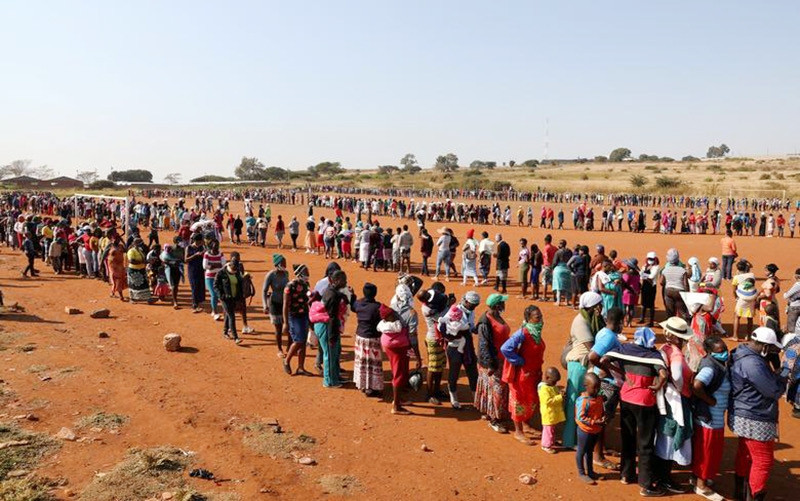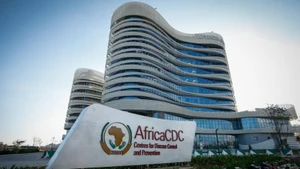The COVID-19 epidemic has continued to witnesscomplicated developments, creating risks that put the global economy in a vulnerable position. The raging epidemic has shaken many powers, while many developing countries are also facing many difficulties due to limited financial resources and outdated medical conditions.
High inflation in the US and Europe is forecast to cause damage to many countries and regions. From mid-2021 until now, inflation in the US and Europe has continuously increased sharply, with the US inflation rate in November 2021 hitting 6.8%, the highest level in the past 40 years. The figure for the Eurozone is 5%, the highest level in 25 years.
According to the World Bank's Global Economic Outlook report, variants of the SARS-CoV-2 virus spread, along with inflation, debt, and inequality, have raised uncertainty. Persistent inflation and record levels of public debt now exceeded 26 trillion USD. Global growth in 2022 is forecast at 4.1%.
Slowing economic growth is accompanied by a widening gap in growth rates between developed economies and emerging and developing economies. The growth rate of developed economies is expected to slow from 5% in 2021 to 3.8% in 2022 and 2.3% in 2023. If there is an appropriate adjustment, output and investment in these economies may be back to pre-pandemic levels. However, in emerging and developing economies, growth is expected to slow from 6.3% in 2021 to 4.6% in 2022 and 4.4% in 2023.
Despite a series of challenges, experts still expect the economy to continue to recover in 2022 and have made recommendations to minimise economic damage and promote growth. With close coordination, the world's central banks and financial institutions will help the world avoid another great recession.
In 2022, however, having flexible policies in place is crucial amid the complex set of factors that complicate the situation for policymakers. Specifically, vaccination rates reflect dangerous disparities between countries, withmore than 86 countries not meeting vaccination targets. Meanwhile, more than 60% of developing countries are saddled with debt, more than double what it was a few years ago.
US Treasury Secretary Janet Yellen (G. Yellen) is optimistic that the Omicron variant will have an impact on US economic growth but will not be able to halt the recovery of the world's number one economy. Omicron will affect a number of US economic indicators in the coming months, but will not derail the US economic recovery, which is in the midst of one of the strongest periods of growth in a century.
The stimulus package named “America Rescue Plan” that President Biden is promoting and approved by the Congress in March last year is seen as a “vaccine” for the US economy, protecting the US economic recovery momentum against the risk of new variations.
The European Union (EU) is said to have not yet appeared out of control inflation pressure and is unlikely to see the type of inflation rising like in the US. Even so, the pandemic has taken a huge toll. For Germany, Europe’s economic locomotive, the COVID-19 pandemic has caused a loss of up to 350 billion EUR, causing the government of this country to lower its growth forecast for 2022.
In Asia, according to the Governor of the Bank of Japan (BOJ), public debt in Japan is now more than 200% of the GDP, but the government expects a budget surplus to return from 2025, while public debt will decrease. The inflation rate in Japan is expected to be around 1% in 2022.
Policymakers have made recommendations to “rescue” the world economy from the unpredictable impact of the new variant of COVID-19. However, in the face of a series of risks facing the global economy, it is necessary for economies in the world to coordinate actions and join hands to recover effectively.















